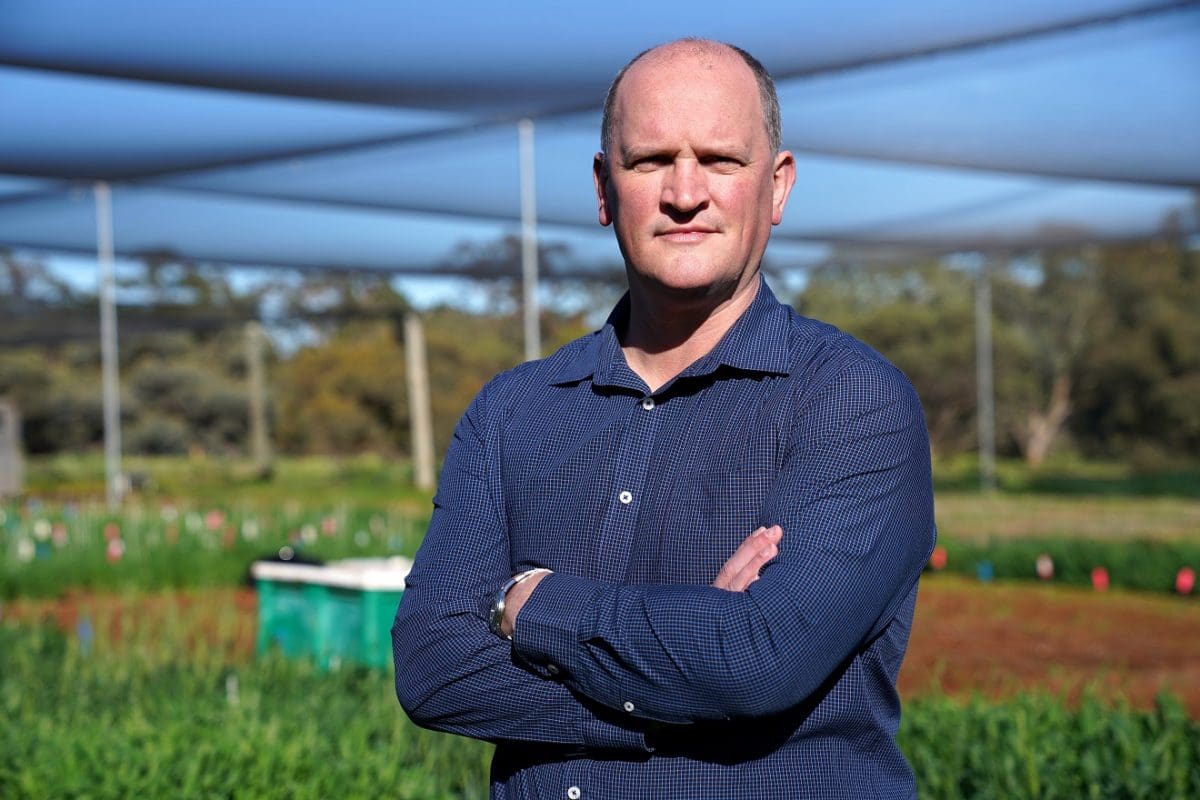
Inaugural chief executive officer of Grains Australia Limited, Jonathan Wilson.
GRAINS Australia Limited’s (GAL) first projects are ready to launch following the awarding of a grant from the Federal Government’s Agricultural Trade and Market Access Cooperation (ATMAC) Program.
Totalling $969,480, the grant will enable GAL to engage pre-existing industry entities the Australian Export Grain Innovation Centre (AEGIC), Grain Trade Australia (GTA), and GrainGrowers Limited (GGL) to carry out its initial projects.
The projects, and the parties contracted to deliver them, are:
- Export demand for pulses with co-funding partner GRDC: AEGIC;
- Demand for feedgrain into Asia: AEGIC;
- Non-traditional malting barley markets: AEGIC;
- Market expansion in India: GTA;
- Communicating the way our growers produce grain: GGL;
- Framework development: GAL.
GAL was formed last year as an initiative of the Grains Research and Development Corporation (GRDC), GGL, Grain Producers Australia and GTA, and has received seed funding from GRDC.
Western Australian mixed farmer and former AEGIC chair Terry Enright was appointed as the inaugural GAL chairperson in September last year.
Northern NSW grower Rebecca Reardon, Melbourne-based Stuart Richardson, and Andrew Young from Perth bring considerable grain-trading experience to the board, which is rounded out by Adelaide commercial lawyer Catherine Cooper.
In December, the GAL board appointed Jonathan Wilson as chief executive officer, who said the industry had used its collective experience to identify the five market-focussed projects with the knowledge that a winter crop forecast by ABARES at 48.6 million tonnes was on its way.
“We held a significant number of meetings, and we co-ordinated what we thought should go into our first round of projects,” Mr Wilson said.
These projects have been given a budget and a timeframe, and build on work already being done by industry bodies and government.
“The co-investment by government and industry in these projects is significant and recognises an immediate need to help the grain industry expand market opportunities much quicker so we can effectively market the crop and maximise returns for growers,” Mr Wilson said.
Pulses
India has traditionally been Australia’s biggest-volume pulse market, and bought most of its chickpeas and lentils prior to the Modi Government introducing tariffs to support domestic pulse prices.
This means other South Asian markets such as Bangladesh, Nepal, Pakistan and Sri Lanka have increased in significance to the Australian pulse industry.
Egypt remains Australia’s major customer on faba beans, and Western Australia is a major exporter of lupins to Asia and Europe.
Other markets such as the United Kingdom on chickpeas are seen as having potential for growth, and the GAL project will investigate how export channels can be widened.
Feedgrain to Asia
Australia is a volume supplier of wheat, barley and sorghum to the Asian stockfeed market.
In the fallout from China closing its door to Australian barley, Thailand and Vietnam have supplemented feed demand from Saudi Arabia and other Middle East destinations.
The Indonesia-Australia Comprehensive Economic Partnership Agreement (IA-CEPA) includes an initial quota of 500,000 tonnes of Australian feedgrain to Indonesia per year.
The GAL project is looking to further advance work done by Australian exporters and industry to convince Asia’s stockfeed millers that Australian grain is interchangeable with corn sourced from the Americas, and from the Black Sea.
Malting markets
Research undertaken by AEGIC has identified the need for Australia to continue to engage with China despite this export market being in hiatus, and to look at opening and augmenting malting markets across Asia.
“In those non-traditional malting markets, we’re looking at providing technical support around how Australian malting barley can be used.”
India
The potential for India to become a volume importer of Australian grain as well as pulses has already undergone some preliminary investigation, with the focus thus far on malting barley.
“We’ve identified India as one of the most important potential markets we’ve got, and not just for pulses.”
Communication of the grower story
As global markets increase their awareness of sustainability and other credentials, Mr Wilson said the time has come for Australian growers to tell their story.
That requires industry to become proactive on their behalf.
“We need to not be just doing the right thing; we have to be seen to be doing the right thing.”
He said the regulations set by the Australian Government on biosecurity, and the ability of Australian growers and exporters to meet them, are exemplary.
“If we can tell that story, our competitors can’t be flinging stones at us.”
“We know our product has a very different value proposition to a lot of other origins, and that’s something we need to communicate to our export markets.”
Framework
GAL was formed to streamline some aspects of the Australian grain industry, including market access, market research, and administration of varietal classification.
To this point, it is now the only member of Wheat Quality Australia.
Now that the initial five outward-looking projects are under way, Mr Wilson said GAL can look to simplify some of the internal processes within the grains industry.
Grain Central: Get our free daily cropping news straight to your inbox – Click here

HAVE YOUR SAY